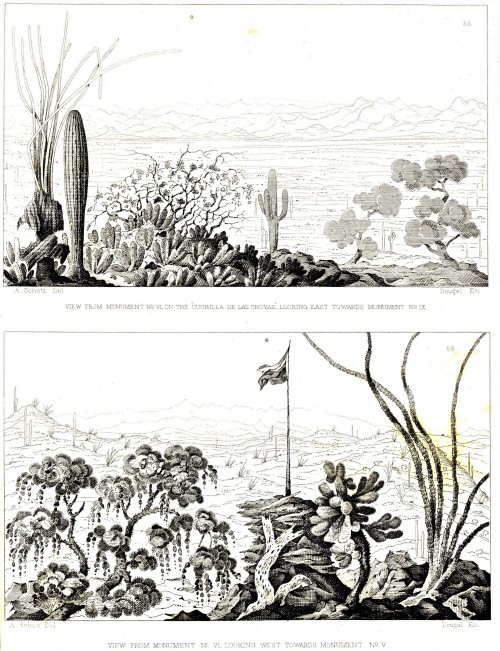#cornelius wendell
Science Saturday
Cacti along the U.S.-Mexican Border
From 1848 to 1855, the United States conducted a survey of the U.S.-Mexican border under the leadership of American surveyor and civil engineer William H. Emory. The survey established the border between the United States and Mexico as defined in the Treaty of Guadalupe Hidalgo, and the results were reported in this three-volume set, Report on the United States and Mexican Boundary Survey, published in Washington D.C. by government printer Cornelius Wendell from 1857-1859.
In addition to its documentation of the new boundary, the survey report was notable for its natural history content, including the most comprehensive vegetative investigation ever conducted on the 1,969 mile border between Mexico and the United States. Many botanists took part in different legs of the Survey, including the German-American botanist George Engelmann who wrote the section on Cactaceae.
The illustrations shown here, which include several species of cacti, are by the German-American artist and botanist Arthur Schott. The engravings were engraved by William Henry Dougal andJames David Smillie. The chromolithograph of Tohono O'odham (Papago) women harvesting Organ Pipe Cactus fruit was printed by the New York firm of Sarony, Major & Knapp.
ViewmoreScience Saturdayposts.
Post link





